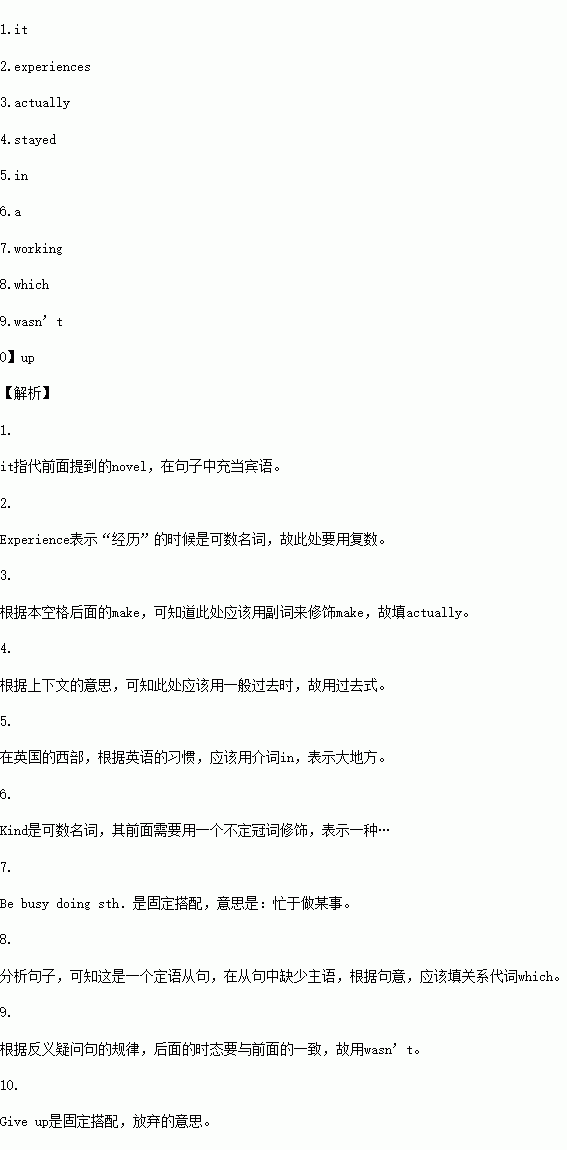题目内容
A: Now let’s go back to your first novel, Rag Doll.When did you write 1. ?
B: Rag Doll, yes.I wrote it in 1960, a year after I left school.
A: How old were you then?
B: Um, eighteen? Yes, eighteen, because a year later I went to IndonesiA.
A: Mm.And of course it was your 2. (experience) in Indonesia that inspired your first film Eastern Moon.
B: Yes, that’s right, although I didn’t 3.(actual) make Eastern Moon until 1978.
A: And you worked in television for a time too?
B: Yes, I started making documentaries for television in 1973, when I was thirty.That was after I gave up farming.
A: Farming?
B: Yes, that’s right.You see, I 4. (stay) in Indonesia for eight years.I met my wife there in 1965, and we came back and bought a farm 5. the west of England, in 1970.It was really 6.kind of experiment .
A: But you gave up three years later.
B: Well, yes.You see it was very hard work, and I was also very busy 7. (work) on my second novel, the Cold Earth, 8. came out in 1975
A: Yes, that was a best-seller, 9. it?
B: Yes, it was, and that’s why only two years after that I was able to give 10. televisionwork and fix my attention on films and that sort of thing.
 优生乐园系列答案
优生乐园系列答案 新编小学单元自测题系列答案
新编小学单元自测题系列答案
